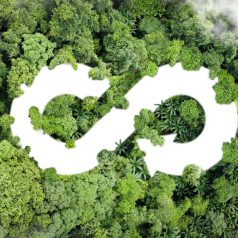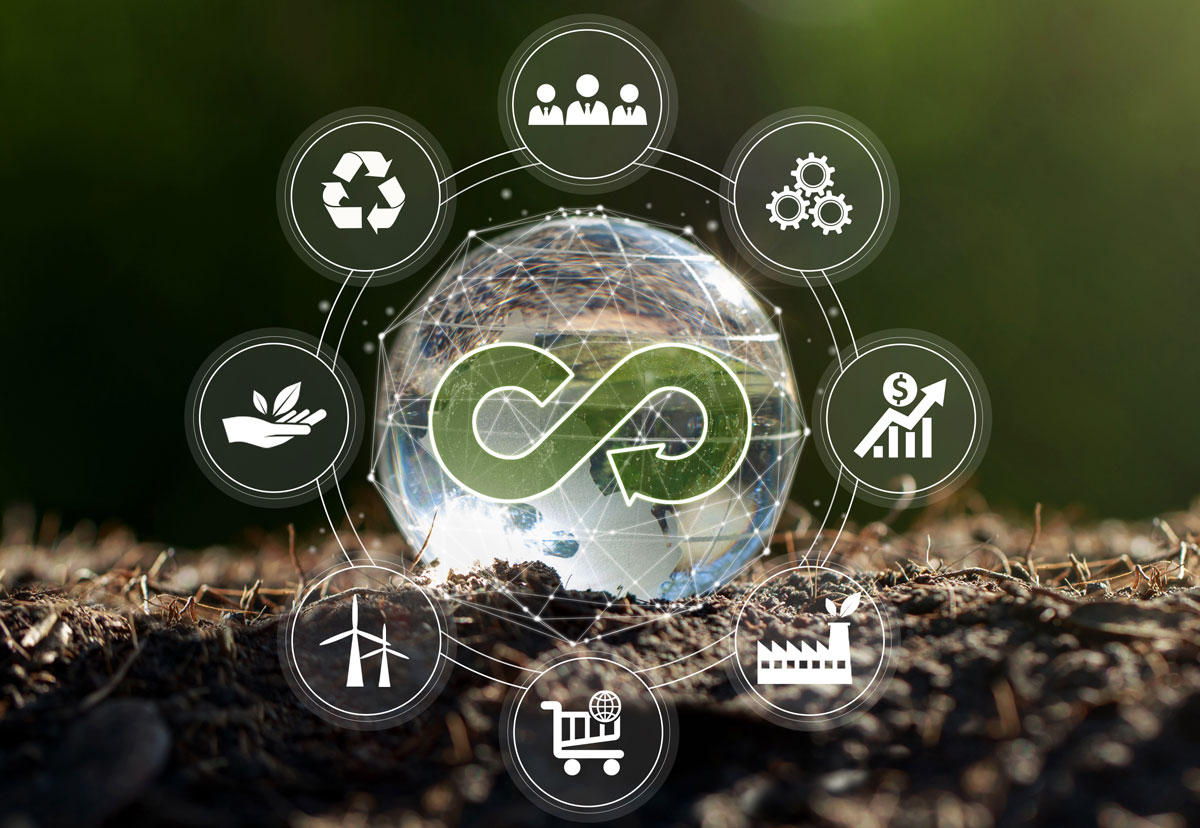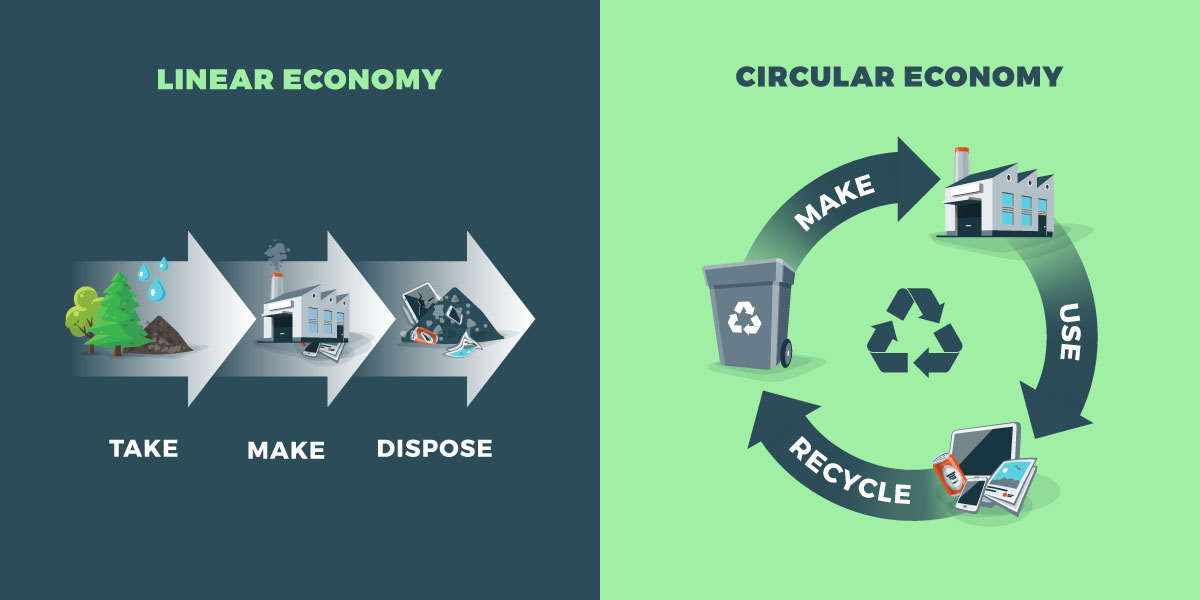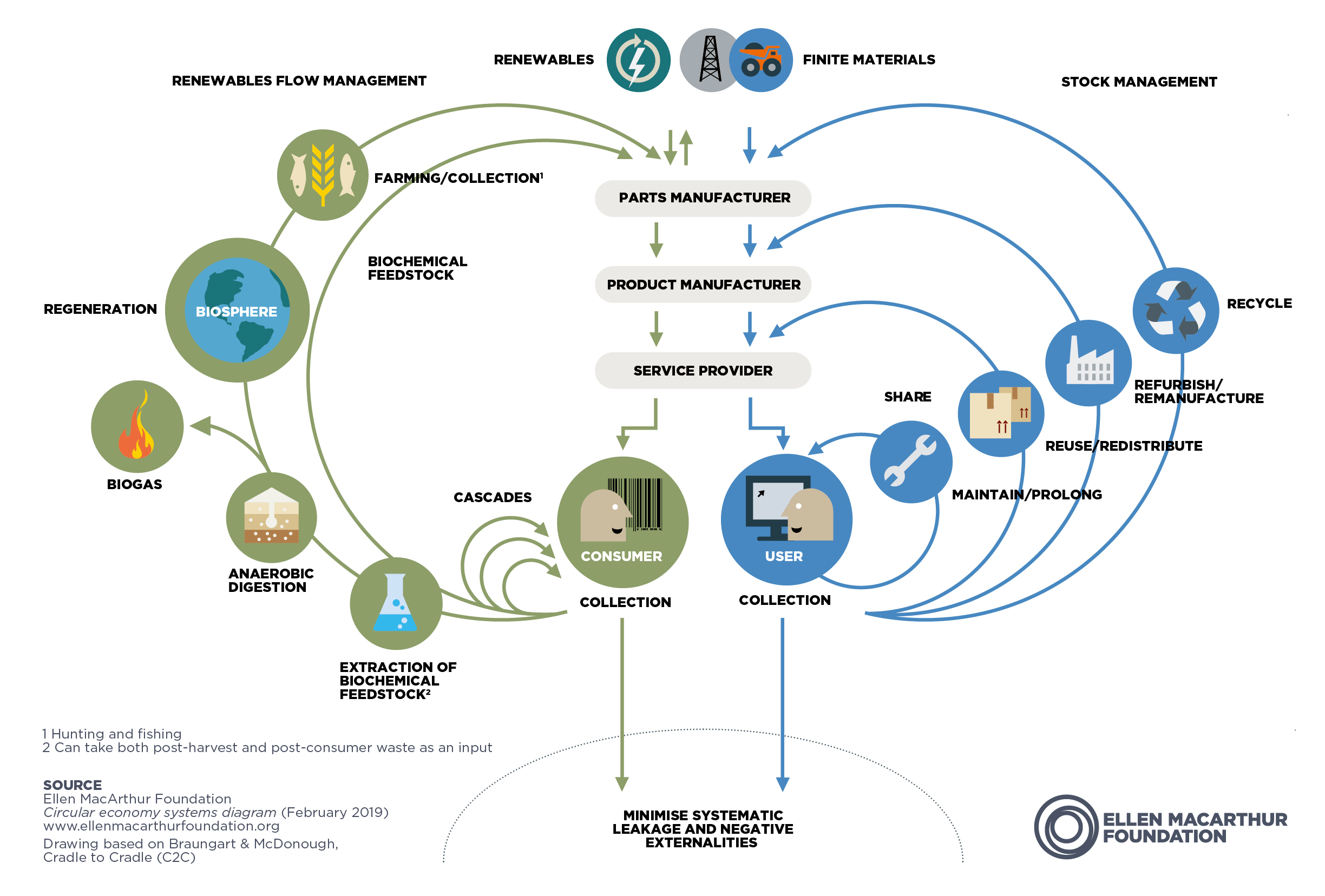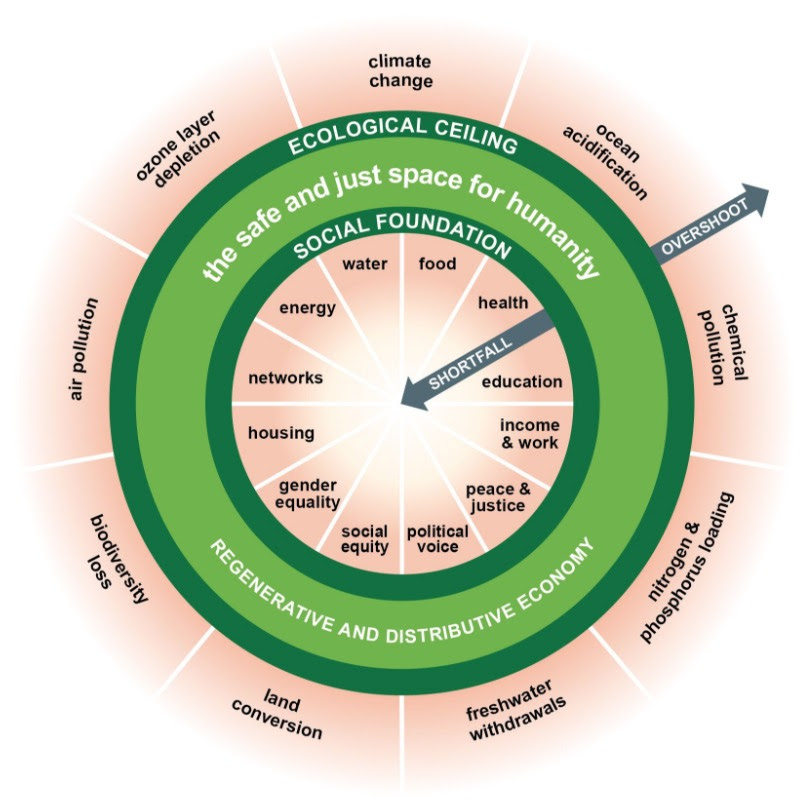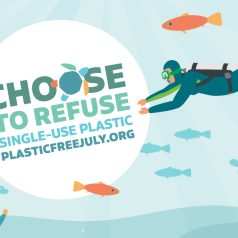
Plastic Free July
Founded in 2011 by the Plastic Free Foundation, Plastic Free July is a global movement that helps millions of people be part of the solution to plastic pollution – so we can have cleaner streets, oceans, and more beautiful communities. Since its inception, this movement has inspired 100+ million participants in 190 countries to engage in transformative change. Of course, it’s not just single-use plastic; it’s single-use itself that is driving the problem, so we encourage you to think beyond plastics to any single-use item that can be replaced with a reusable item to shift our society from a throw-away economy to one that truly embraces and supports circularity.
Here’s a great video from Upstream on the Reuse Movement that serves as an inspiring primer:
Taking Action
The EPA recently released a Draft National Strategy to Prevent Plastic Pollution—part of a series of EPA plans centered around “building a circular economy for all.” It’s encouraging to see such movement at the federal level, and there are several worthy elements in this draft strategy. However, there is also room for improvement, especially when it comes to emphasizing reuse as a solution to plastic pollution. This Plastic Free July, we have a huge opportunity to make our voices heard by the EPA and bring home the message that it’s not just single-use plastic, it’s single-use itself that’s driving our throw-away economy. With this in mind, we encourage you to submit your comments to the EPA by July 31st. Need help crafting effective comments? Upstream Solutions has published an outline on its website, which provides a helpful guide.
We also love this roundup from Reuse Solutions Network, which provides some ideas to help you not only go plastic-free but engage in the ultimate solution to plastic pollution—reuse.
Reuse Opportunities at the Co-op
Here at the Co-op, we spend a lot of time thinking about how to reduce and eliminate packaging waste and dedicated our Spring 2019 issue of our Under the Sun Newsletter to the topic of reuse, complete with a handy centerfold map highlighting the ways to participate in systems of reuse at the co-op:
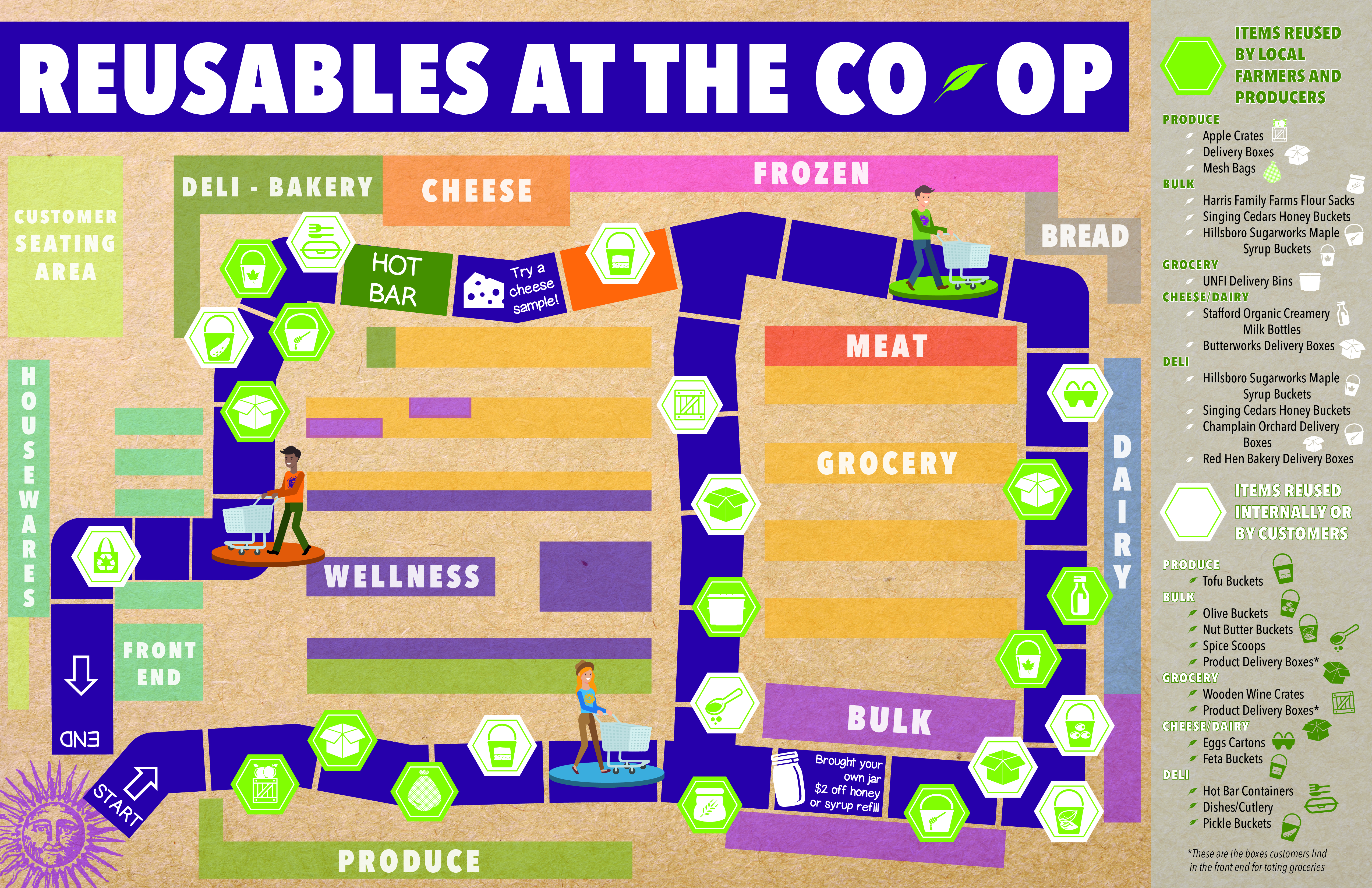
We’re grateful to work with a long list of local farmers and producers who share our values around reducing waste and promoting reuse. The local farmers and producers enjoy being able to reuse items like apple crates, 5-gallon buckets, milk bottles, large mesh veggie bags, and delivery boxes in a circular system by which they deliver items to us in these vessels, we transfer the items from their delivery vessels to our shelves, then we place the empty vessels in our storage areas so that the farmers can retrieve them to use again and again. This video on our Co-op Instagram page illustrates how this works.
One great example is our partnership with Hillsboro Sugarworks and Singing Cedars Apiaries to create a waste-free circular system of reuse for our bulk maple syrup and honey. These local producers deliver the syrup and honey in 5-gallon buckets, we use those buckets to fill our bulk tanks (from which you can fill up your jar when you shop), and we return the empty buckets to the folks at Hillsboro Sugarworks and Singing Cedars Apiaries to be sterilized and refilled over and over again. Here’s a video clip that talks more about this wonderful circular system of reuse.
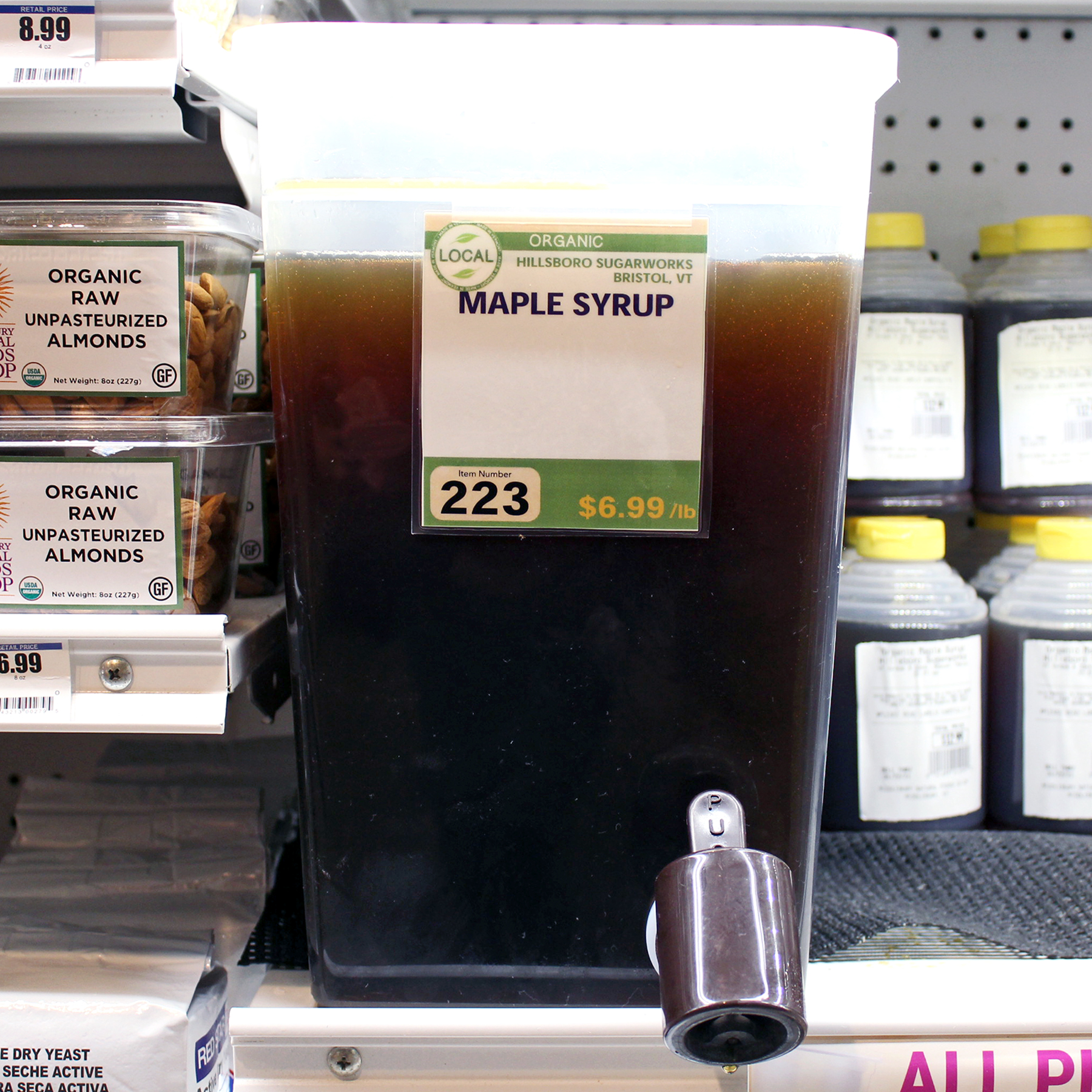
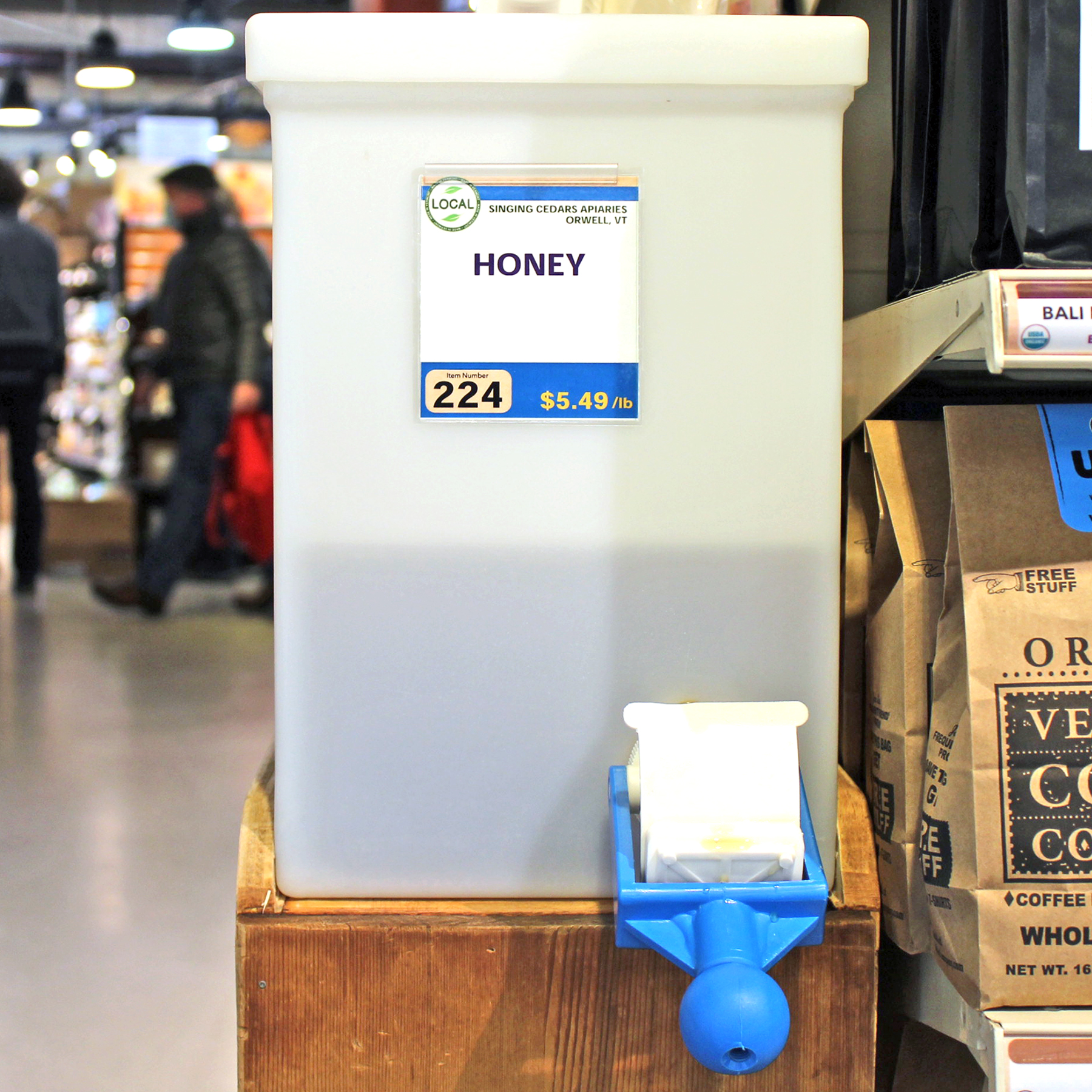
We’re proud to offer hundreds of items in bulk bins throughout the store so that you can bring your own containers from home and fill them with the items you need without the packaging. You’ll find bins of grains, flours, granola, vinegars, culinary oils, nuts, nut butters, and so much more in our Bulk department.

Around the corner, you’ll find our bulk coffee section, and in the next aisle, you’ll find a wide selection of bulk jars of teas and spices, along with a new section of gravity bins containing a wide variety of dried fruits.
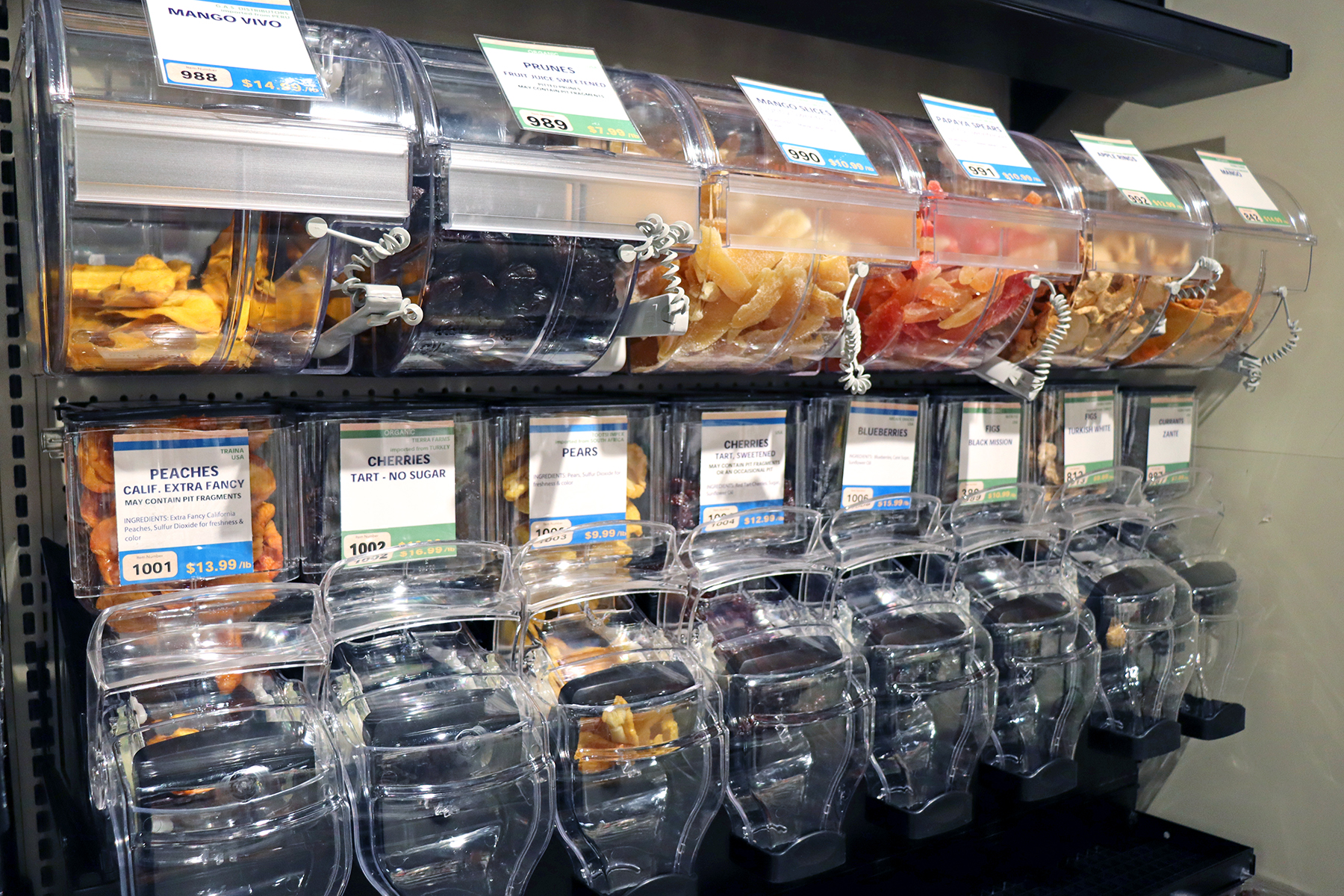
Venture across the center aisle to our recently re-vamped Bulk Body Care section, where you can bring your own container to fill up on all of your favorite body care essentials from shampoo and conditioner to liquid soap and lotion. You’ll also find lots of refill jars containing items that are perfect for crafting your own DIY body care products, complete with recipes to help get the creativity flowing.
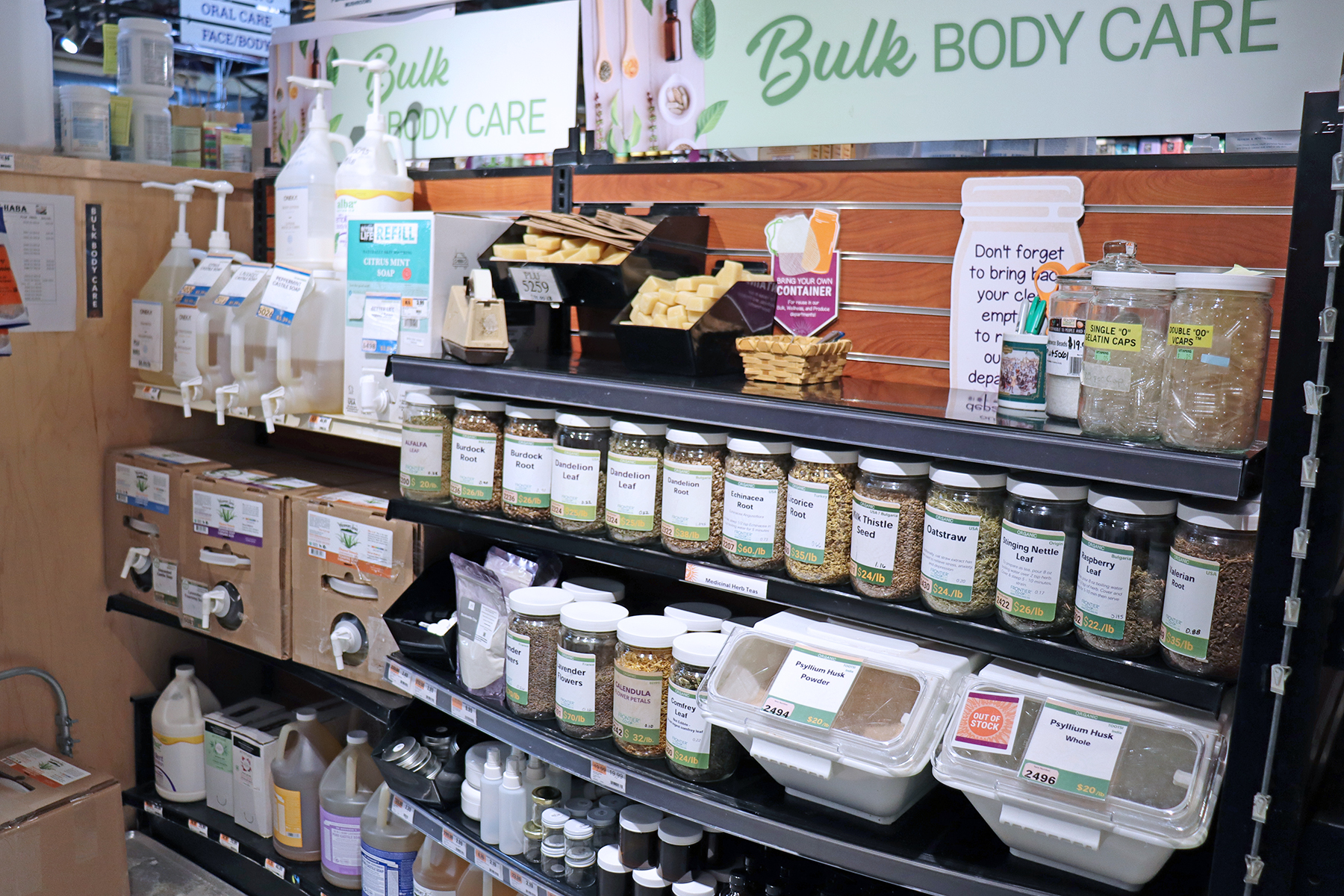
In our snack aisles, you’ll find gravity bins of popular snack items like flavored nut mixes, wild rice sticks, and sesame sticks, and around the corner in the candy aisle, you’ll find plenty of bulk sweet treats ready to dispense into your own containers. A few steps further into the cheese department you’ll find local bulk feta from our friends at Maplebrook Farm and bulk chevre from Blue Ledge Farm. You’ll also find an olive bar, where you can bring your own container to fill up on all your favorites!

While the Vermont State Department of Health will not allow shoppers to bring their own containers from home to buy prepared foods from our salad bar, we were excited to find a workaround. This is our antidote to the ubiquitous single-use take-out container. We offer reusable dishes for folks who dine in-house, but we also recognize that there are times when it makes more sense to take your meal to-go. Thanks to the Lunch to Go and Back Again program, you can take your lunch to-go without the need for disposable containers! Simply pick up one of our reusable to-go containers located at our salad bar, fill it with your favorite salad bar items, then take it to the register. The cashier will charge you a $5 container deposit, which will be refunded to you when you return the rinsed container. Our staff will wash and sanitize it, then return it to the stack to be used over and over again!
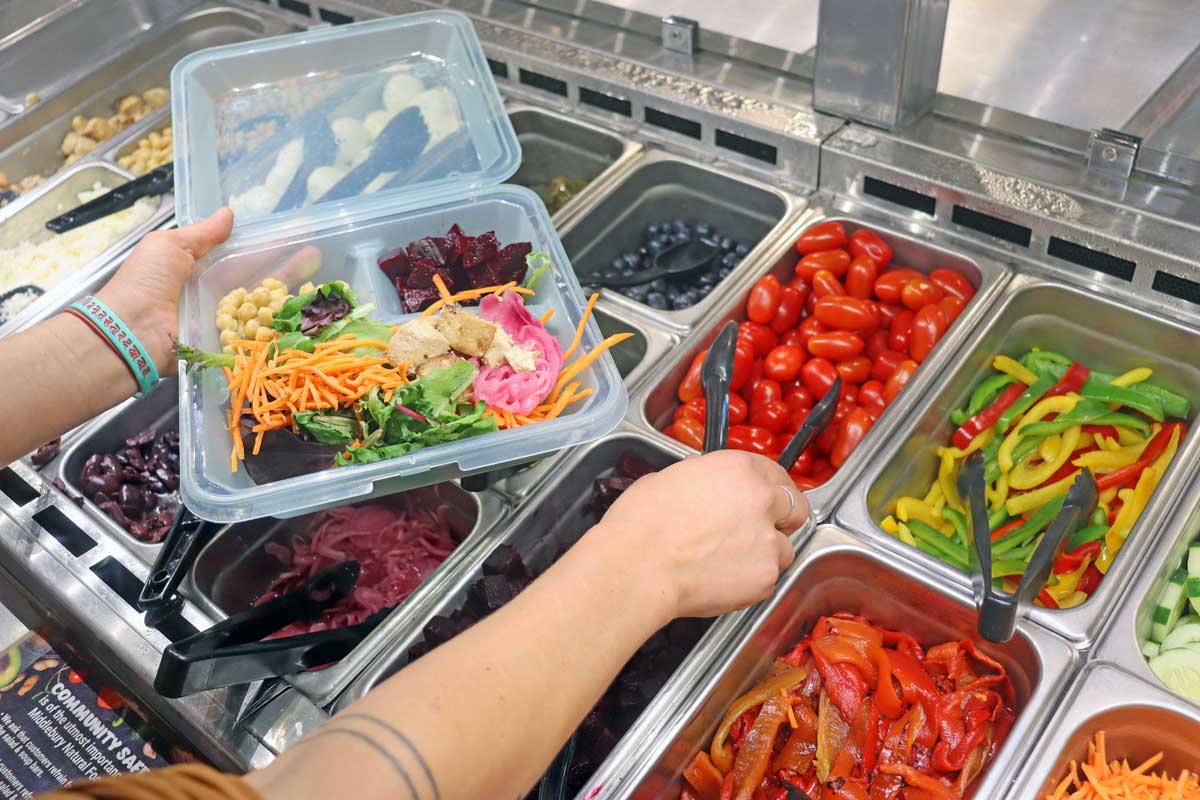
On your way out of the store, don’t forget to drop off your can carriers! We’re a proud participant in the Vermont Can Carrier Reuse Program, which in its first year is on track to divert 100,000 plastic PakTech craft beer/soda can carriers from the waste stream, brilliantly having them picked up by craft beer distributors like Vermont Beer Shepherd during their normal rounds of beer deliveries then returning them to craft breweries for reuse.
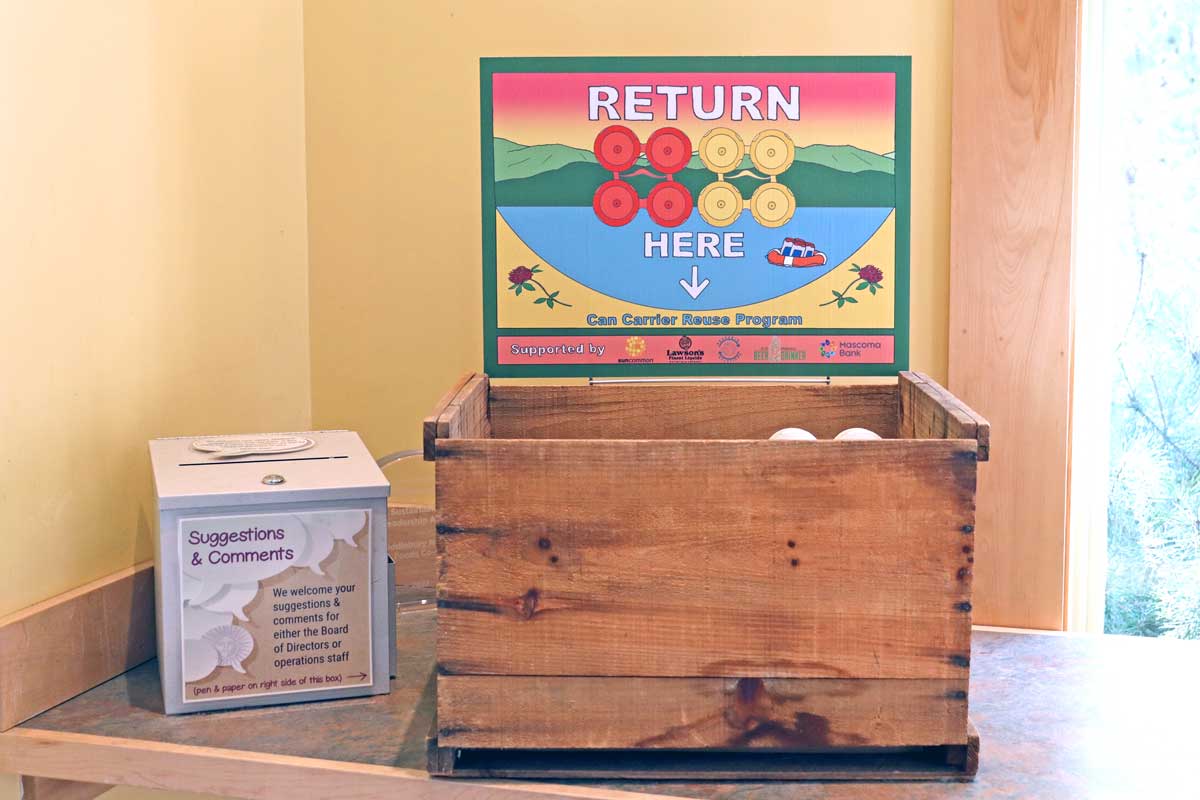
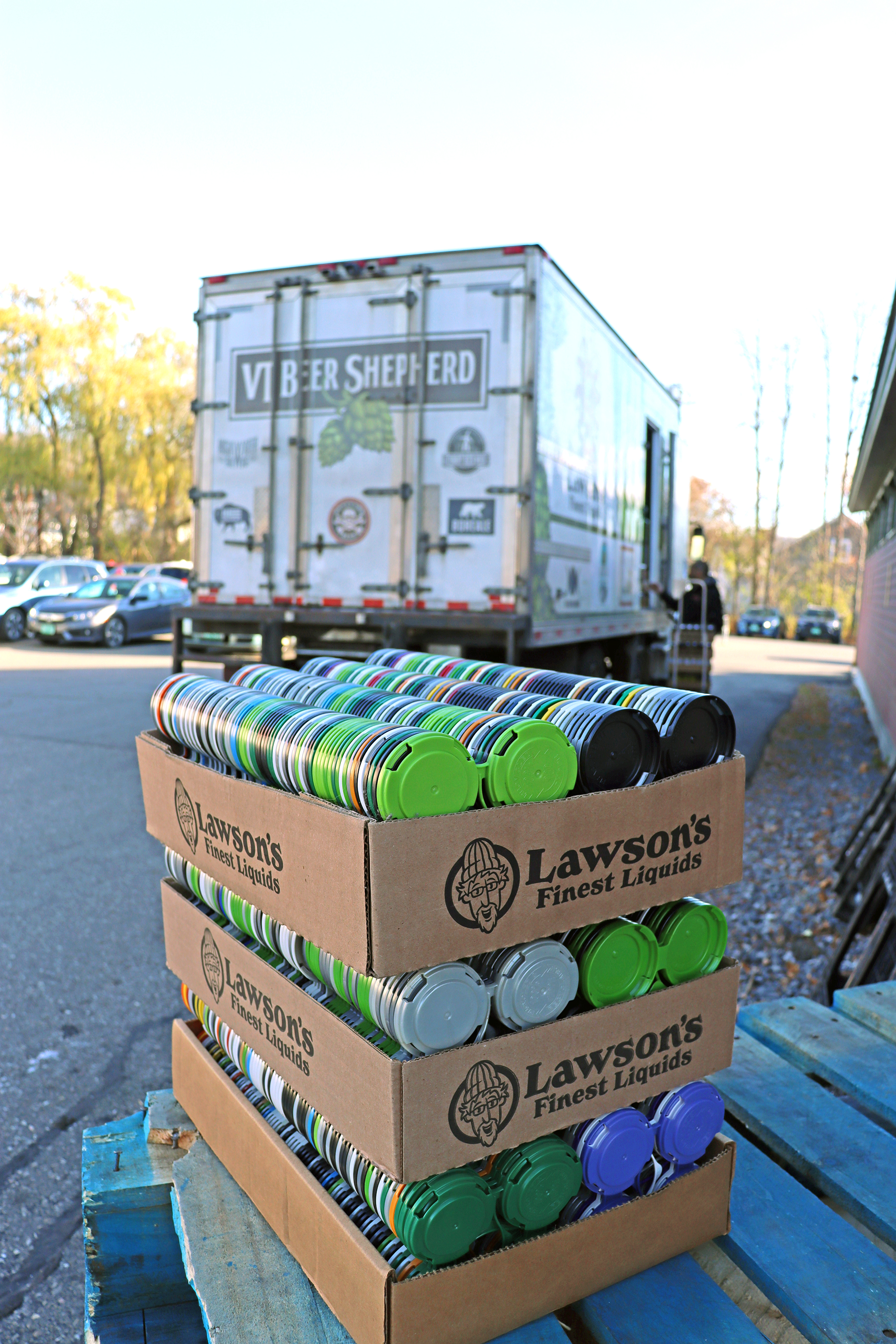
We’re excited by these reuse systems at the Co-op and we recognize that there’s always more that we can do. With this in mind, feel free to share your ideas with us for ways that we can continue to improve the reuse systems at the Co-op! We also invite you to be part of Plastic Free July by clicking this link and signing up for the challenge. Their site is also full of helpful resources and ideas to keep you on the circular path!
And if you’d like to commit to joining a workplace of individuals who share your passion for circularity, we’re hiring! Click here to learn more about joining our team!

